Hi there, pet lovers! 🐦
The European Starling (Sturnus vulgaris) is one of the most fascinating and misunderstood birds in the world. Known for their iridescent plumage, incredible mimicry skills, and breathtaking murmurations, starlings are both admired and considered a nuisance depending on where they live. While they are highly adaptable and intelligent, their invasive status in some countries makes them a controversial choice for a pet.
In this detailed review, we’ll explore everything you need to know about starlings—from their personality and care needs to legal considerations and long-term commitment. Whether you’re curious about these unique birds in the wild or considering raising one, this guide will help you make an informed decision.
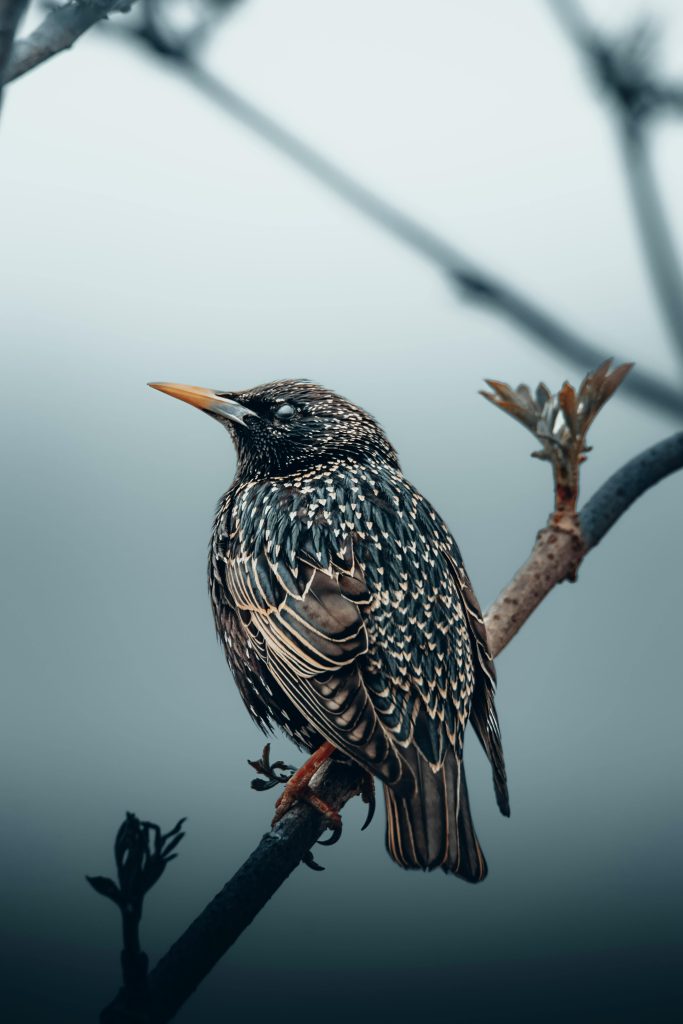
Overview
Starlings are small to medium-sized birds native to Europe and parts of Asia, but now found across the globe. They are celebrated for their mimicry skills, ability to form massive flocks in winter, and their striking feather colors that shine purple and green under sunlight.
Here’s a quick summary of what makes them stand out:
- Handling and Temperament: Intelligent, curious, social, and capable of mimicry.
- Care and Maintenance: Require large enclosures, mental stimulation, and a varied diet.
- Health and Durability: Hardy birds, but need a clean environment and proper nutrition.
- Availability: Found worldwide, though keeping them as pets may be restricted in some regions.
- Cost: Low to moderate setup and feeding cost, but high in terms of time and commitment.
- Overall: A fascinating companion for bird lovers, but best suited for experienced or dedicated keepers.
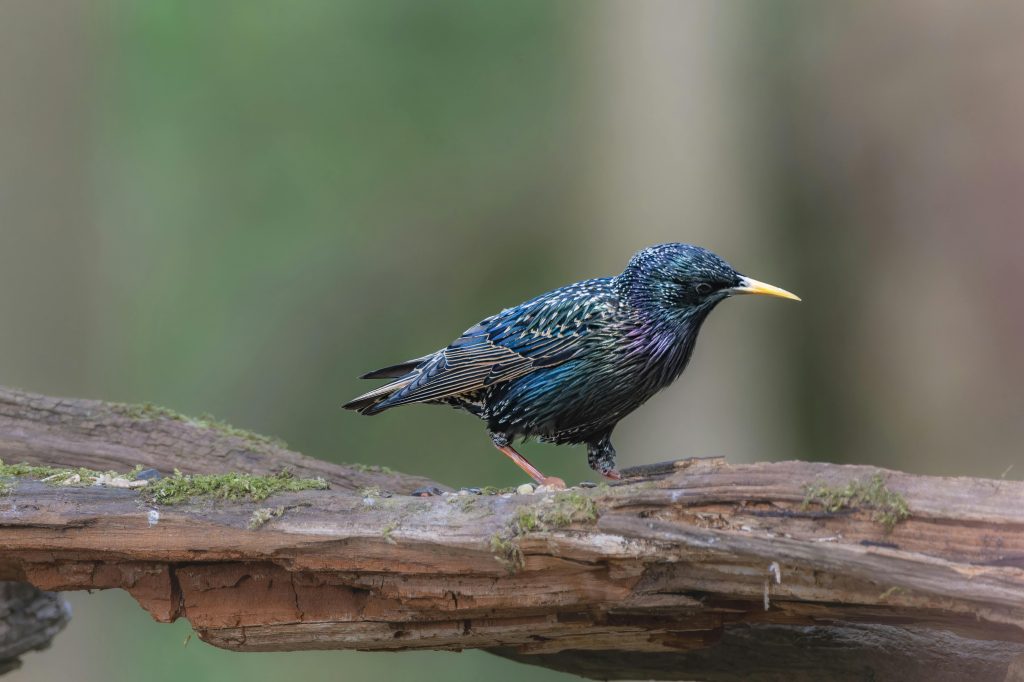
Why Choose a Starling?
Starlings are not your typical pet birds. They are highly intelligent, capable of forming strong bonds with their caretakers, and can even learn to talk or mimic human speech. Their personalities are lively, curious, and often mischievous, making them endlessly entertaining.
For those who enjoy a bird that interacts actively and requires mental stimulation, a starling can be very rewarding. They are playful, adaptable, and have long lifespans compared to many wild songbirds when kept in captivity.
However, they are not for everyone. Their loud calls, constant curiosity, and the legal restrictions in some regions make them a challenging pet choice. For the right person, though, a starling can be an unforgettable companion.
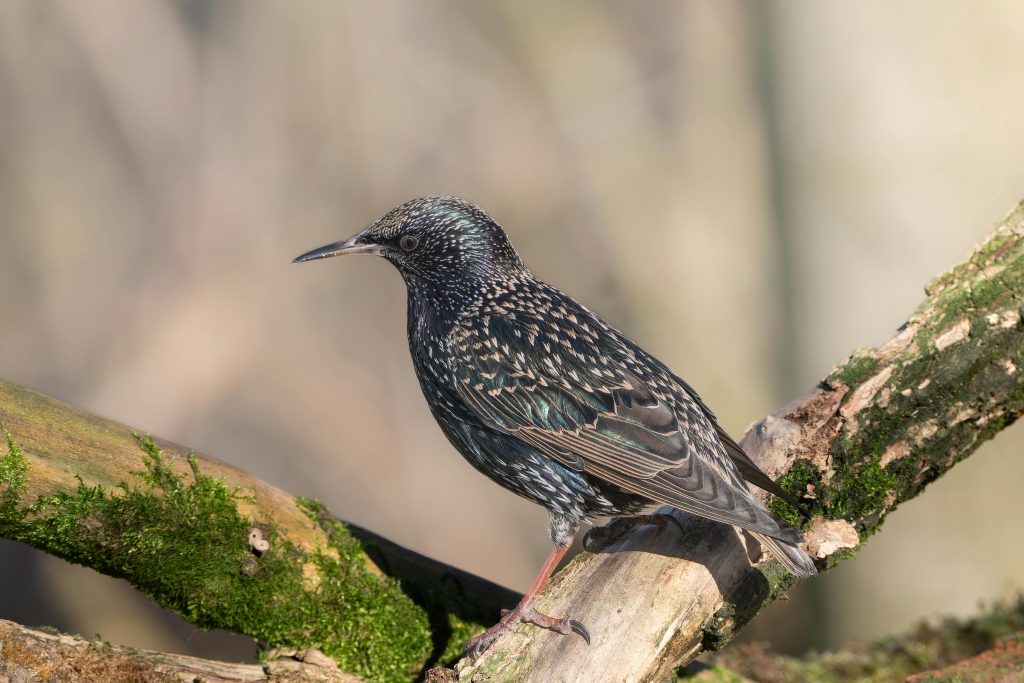
Handling and Temperament
Starlings are social and gregarious birds. In the wild, they are found in large flocks, and in captivity, they bond closely with their human caretakers.
Personality Traits
- Curious: Starlings love to explore and often investigate everything in their surroundings.
- Mimicry: They can imitate sounds, other birds, and even human speech. Some starlings develop vocabularies of dozens of words.
- Affectionate: Hand-raised starlings may become tame and affectionate, often perching on shoulders or interacting with toys.
- Energetic: They are always active, so they need a lot of space to fly and exercise.
Handling Tips
- Early socialization is key; young starlings bond best when hand-fed.
- They are not as delicate as some parrots but still require gentle handling.
- Avoid staring closely into their faces; starlings are known for pecking at shiny eyes or objects.
- Provide safe, supervised out-of-cage time for exercise and bonding.
Unlike parrots, starlings rarely bite hard, but they may peck when curious or startled.
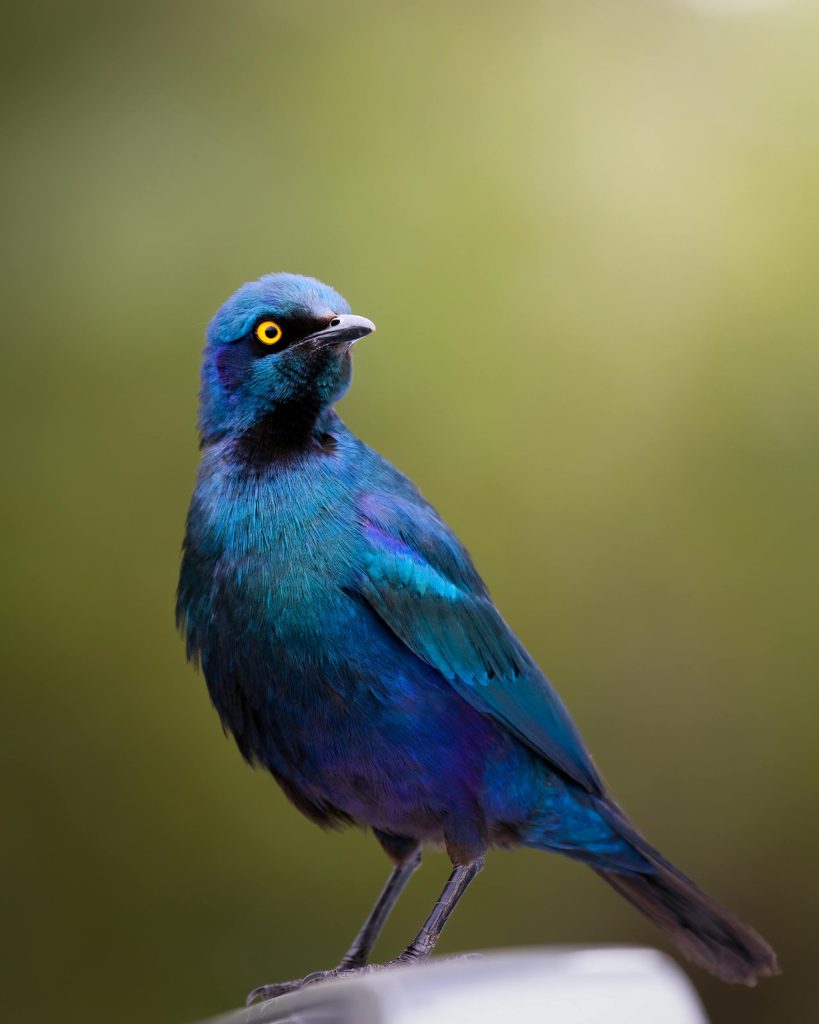
Care and Maintenance
Starlings are not low-maintenance pets. They require plenty of space, enrichment, and a carefully managed diet.
Enclosure Setup
- Size: A starling needs a large, well-ventilated cage or aviary. Ideally, an indoor flight cage or aviary at least 3–4 feet wide and tall should be provided.
- Perches: Offer natural wood perches of varying diameters to keep their feet healthy.
- Toys: Provide bells, mirrors, puzzle toys, and items that encourage problem-solving.
- Bathing: A shallow dish of water should be available for bathing daily, as starlings enjoy keeping their feathers clean.
Habitat Environment
- Place their cage in a quiet area, away from direct drafts and extreme temperatures.
- They thrive with plenty of natural light but avoid prolonged direct sunlight indoors.
Diet
One of the most important aspects of starling care is diet. In the wild, they are omnivores, feeding mainly on insects, worms, and spiders, along with fruits and grains.
Recommended Diet in Captivity
- Insects: Mealworms, crickets, and other small invertebrates.
- Bird Pellets: Specially formulated softbill diets (not parrot pellets).
- Fruits: Apples, grapes, berries, pears.
- Vegetables: Leafy greens, peas, corn.
- Protein: Small amounts of cooked egg or high-protein cat food (in moderation).
Foods to Avoid
- Chocolate, avocado, caffeine, and salty or processed foods are toxic.
Feeding Schedule
- Young starlings (hand-raised) need feeding every 2–3 hours until fledged.
- Adult starlings should be fed daily with access to a variety of foods to prevent boredom and nutritional deficiencies.
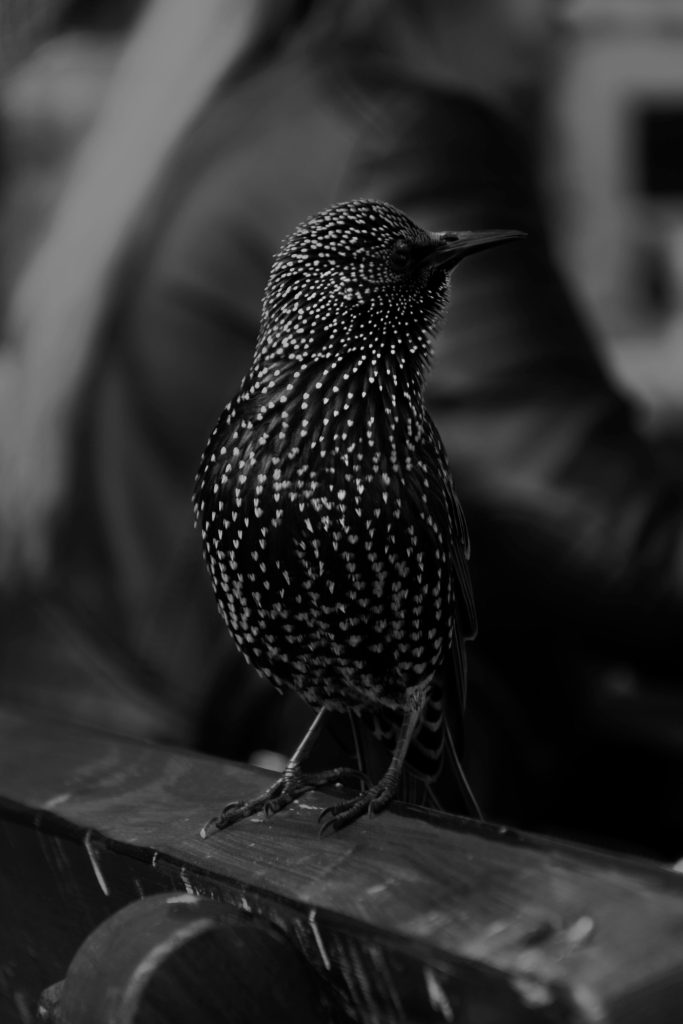
Health and Durability
Starlings are generally hardy birds but require a clean and safe environment to avoid health problems.
Common Health Concerns
- Respiratory infections: Caused by poor ventilation or dusty conditions.
- Nutritional deficiencies: If fed only seed or an imbalanced diet.
- Parasites: Can be an issue if hygiene is neglected.
Preventative Care
- Provide a varied, balanced diet.
- Clean the cage daily to prevent bacterial growth.
- Offer regular opportunities for exercise to keep them fit.
- Watch for signs of illness: fluffed-up feathers, lethargy, or changes in droppings.
With proper care, starlings in captivity can live 10–15 years, significantly longer than their wild lifespan of 2–3 years.
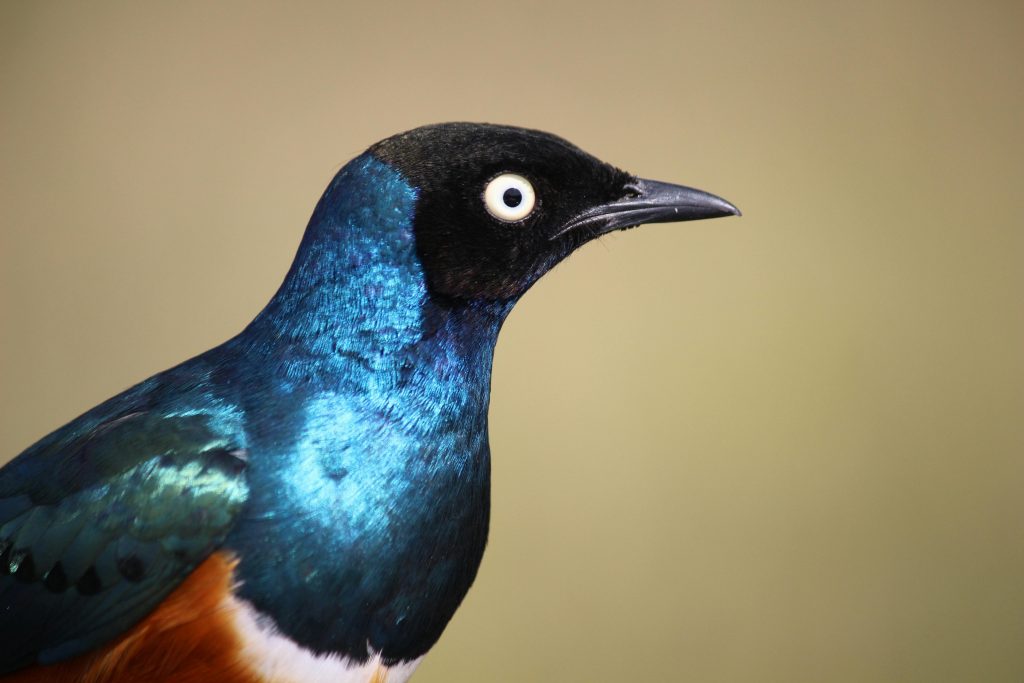
Availability and Cost
Starlings are extremely common birds worldwide, but availability as pets depends heavily on local laws.
Where to Acquire a Starling
- Wild Rescue: In many cases, people raise orphaned starlings found after nests are destroyed.
- Breeders: Rare, but some specialized breeders hand-raise starlings for companionship.
- Pet Stores: Rarely sell starlings due to legal restrictions.
Cost Breakdown
- Bird Price: Often free if rescued; from breeders, costs vary ($50–$200).
- Setup Cost: Around $200–$400 for a suitable cage, perches, toys, and initial food supply.
- Ongoing Cost: $20–$40 per month for food and enrichment.
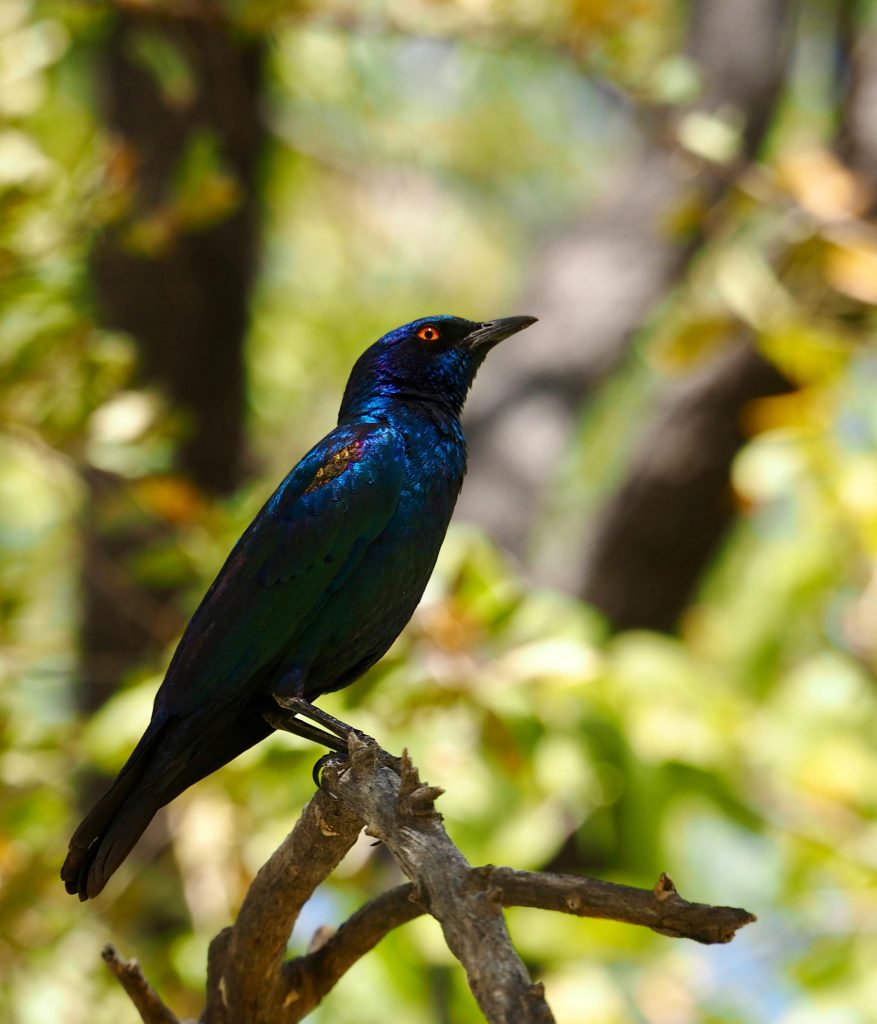
Pros and Cons
Pros
- Highly intelligent and capable of mimicry.
- Strong bonds with caretakers, often affectionate.
- Fascinating behaviors, especially vocalizations.
- Long lifespan in captivity.
- Active, playful, and entertaining.
Cons
- Not legal to own in some countries (invasive species status).
- Require large spaces and daily enrichment.
- Can be loud and messy.
- Time-consuming, especially for hand-raising babies.
- Social birds that need constant interaction.
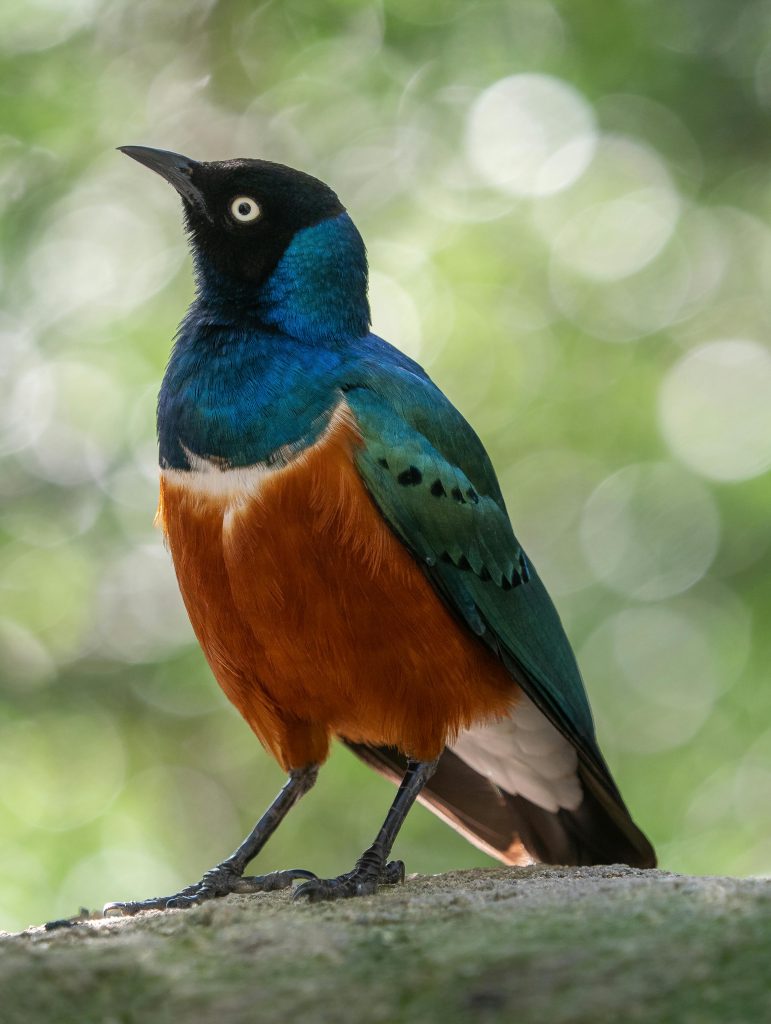
Final Thoughts
Starlings are remarkably intelligent, social, and captivating birds. Their ability to mimic sounds, their playful personalities, and their shimmering feathers make them unlike any other common backyard bird. For those willing to put in the time and care, they can become loyal and engaging companions.
However, potential keepers must be aware of their legal status, as in many regions they are classified as invasive and may not be kept as pets. Additionally, they require significant attention, space, and proper diet to thrive in captivity.
For experienced bird enthusiasts or those with a rescued starling in need of care, these birds can provide years of companionship and joy. Watching a starling mimic your words, play with toys, or bathe in water is an experience that never gets old.
If you’re considering a starling, research your local laws, ensure you can meet their care requirements, and prepare for a long-term, highly interactive pet.
Have you ever raised or cared for a starling? Share your experiences and tips in the comments below—we’d love to hear your stories!
For more bird care reviews and guides, stay tuned to our blog and don’t forget to subscribe to our newsletter! 🐦

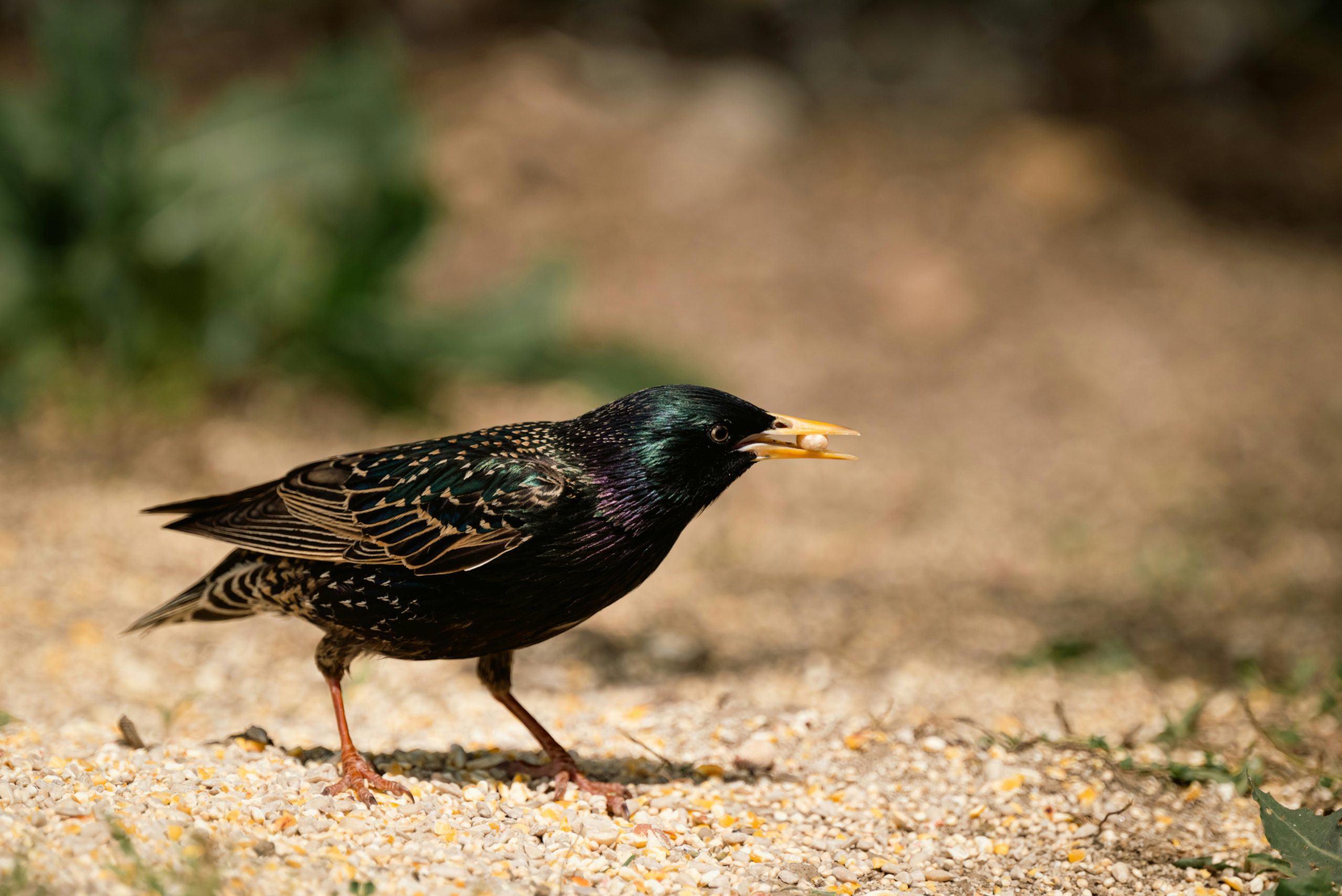

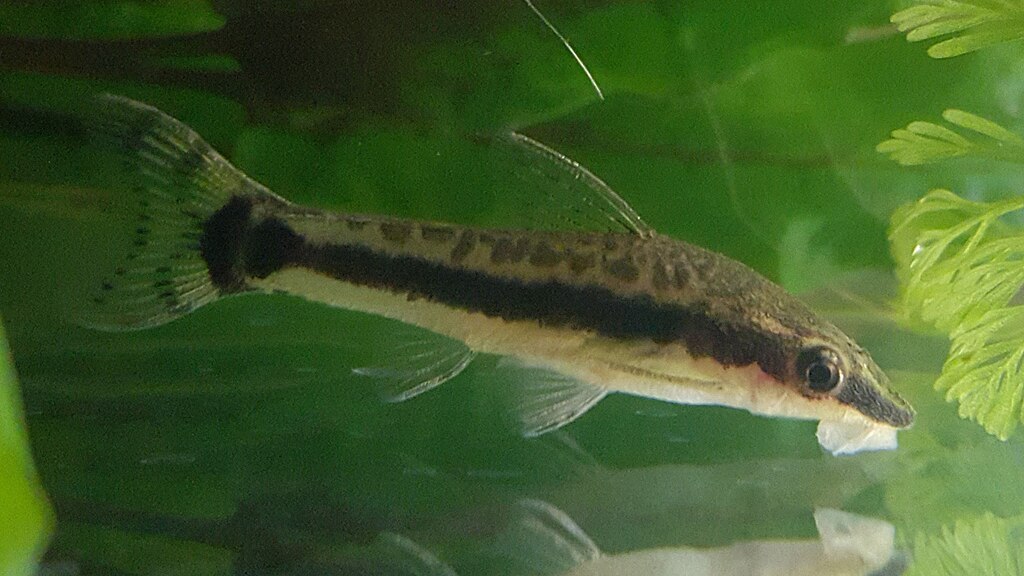

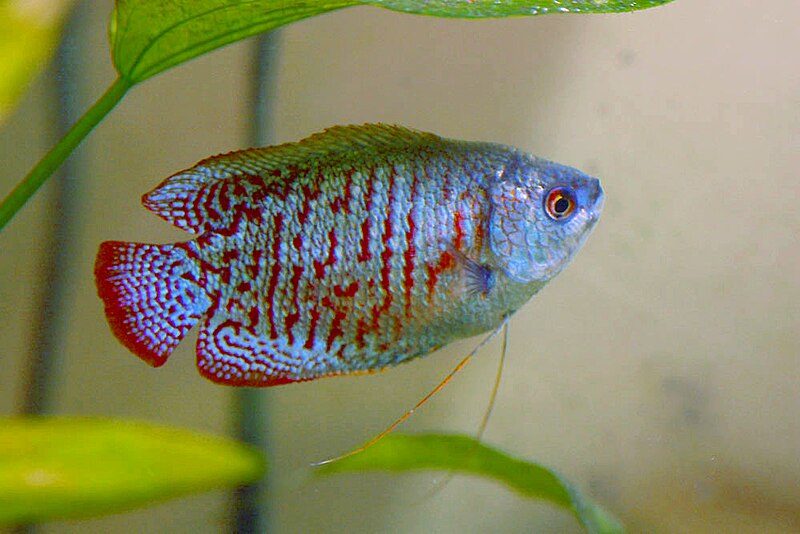

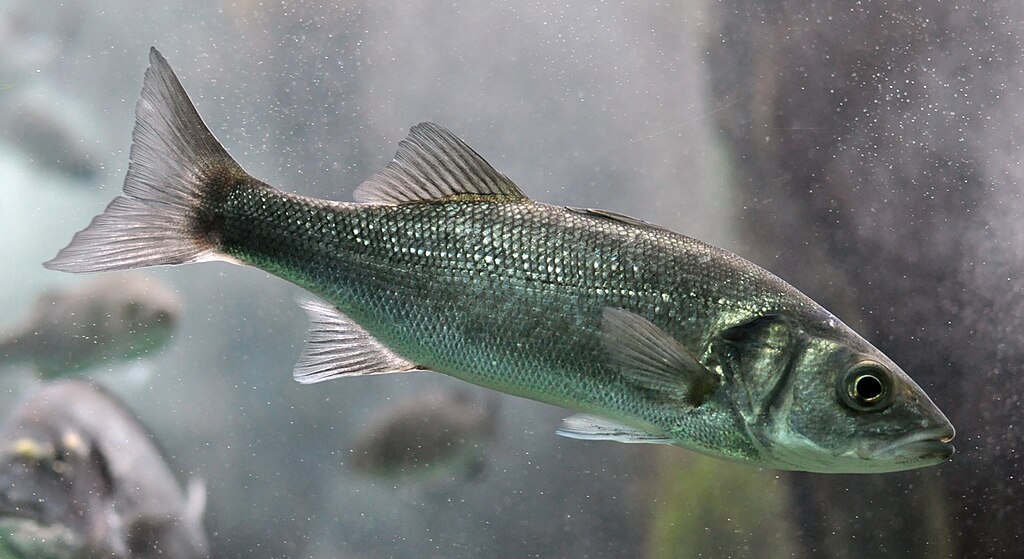
Leave a Reply